Drinking, karaoke and art with the artists of the Exit 26 exhibit
From the Ritter Art gallery to the Black Rose Irish Pub, we talked aesthetics, life after graduation and promethazine with FAU artists.
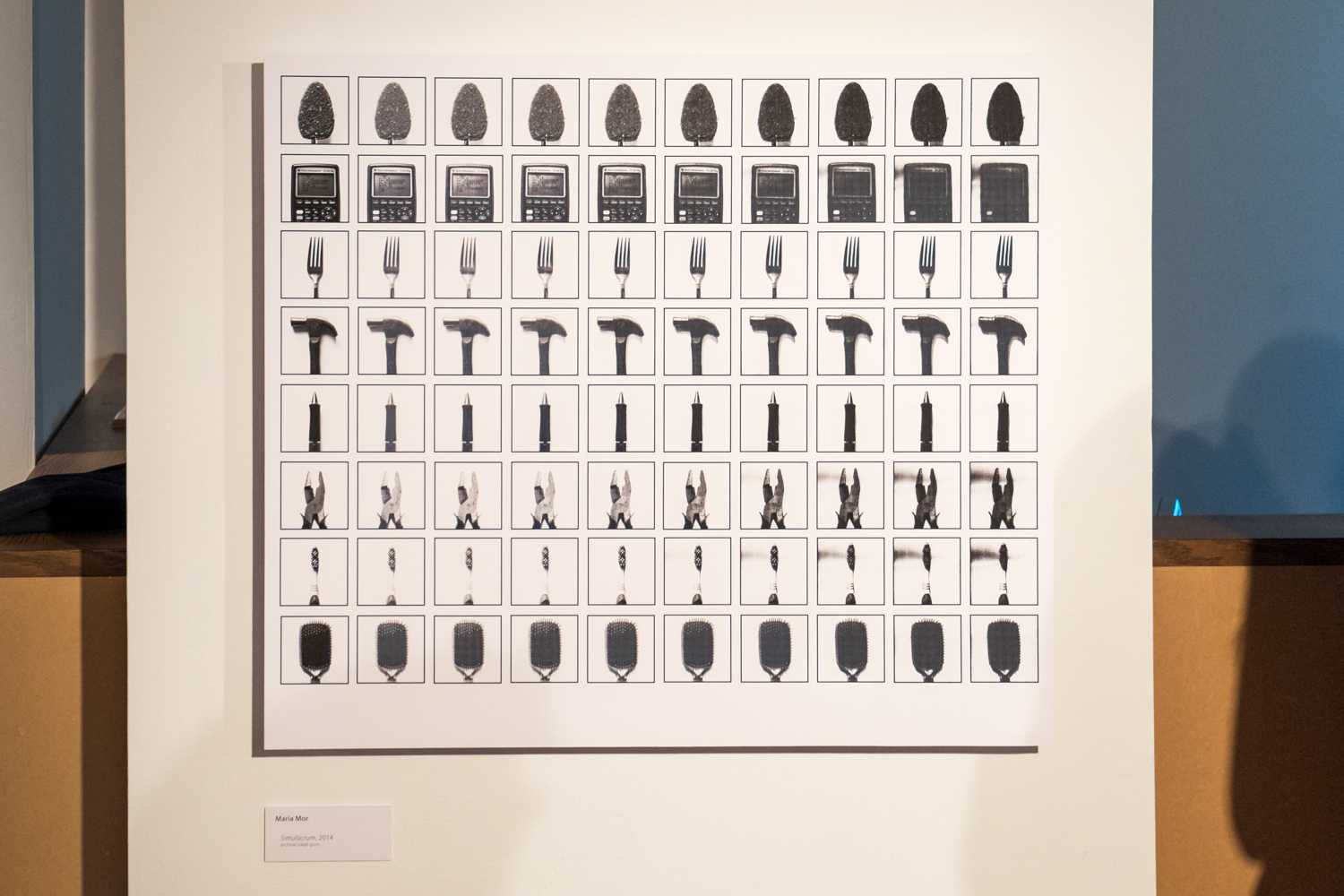
Mohammed F Emran | Web Editor
Photography major Maria Mor’s piece in the exhibit is titled “Simulacrum.” Her work consists of seven photographs of everyday items ranging from a hammer to a toothbrush. The original photo is copied, then that copy is copied. The process is inspired by French post-structuralist and philosopher Jean Baudrillard.

French philosophy isn’t exactly the most accessible concept to twenty-somethings, and Mor doesn’t really seem to care. “That’s why I create for myself, at the end of the day I get it,” she said while sipping a beer.
The irony of posting a piece about copies, in an art gallery which is in itself an exhibit where copies of real things are on display might make Mor’s the best piece in the entire exhibit.
“That was my whole concept, I’m creating a copy of a copy of a copy and in the end the full product is a copy” said Mor, smiling, and her classmates agreed.
Outside of The Black Rose, studio art major Lucas Andahl told Mor what he thought of her work. Andahl leaned towards Mor while slurring some words.
“Your piece that you worked on for two years, that’s awesome,” he said. “Aesthetics come last for you, and that’s really brave.”
If any work truly showcased bravery, it was Andahl’s.
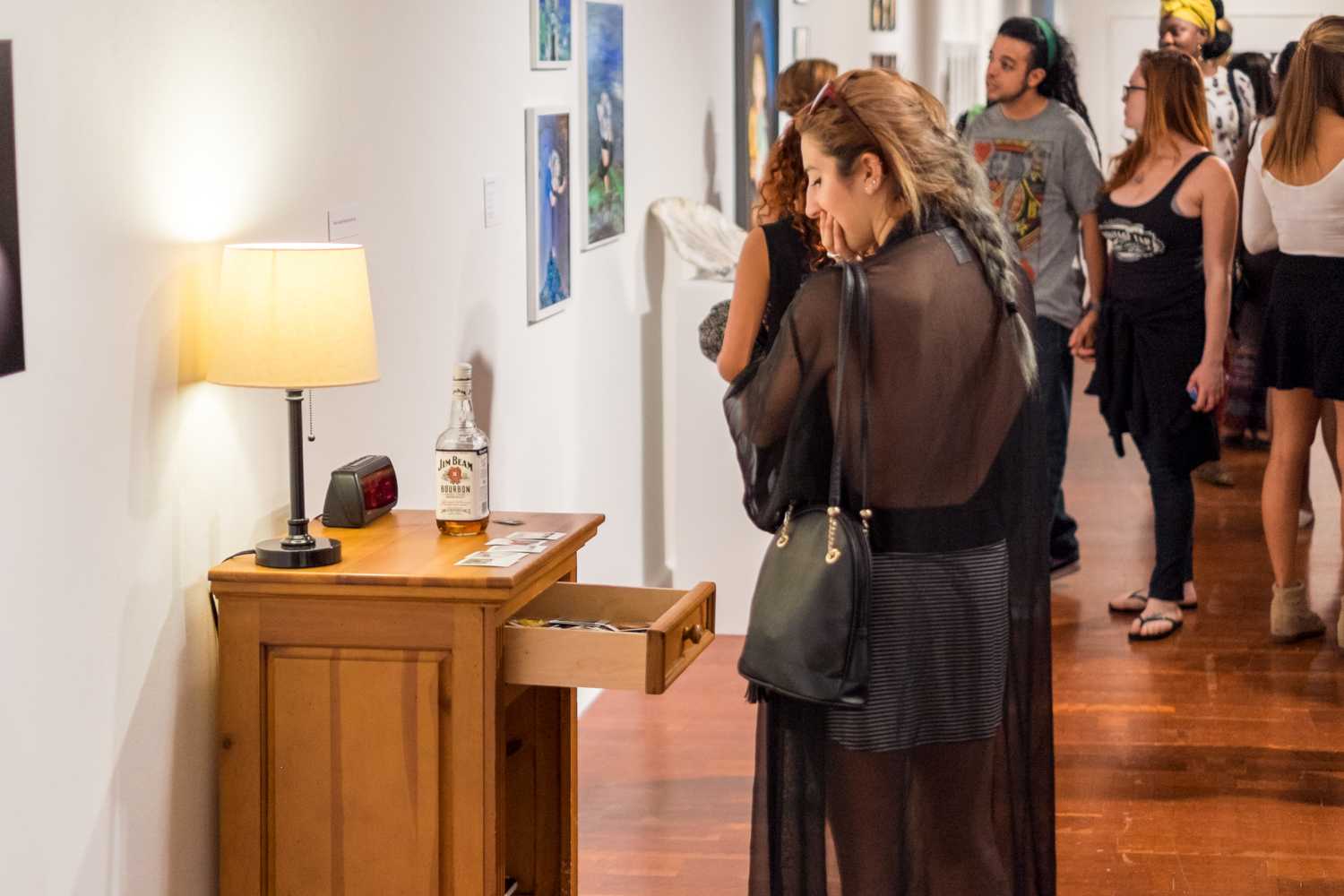
Mohammed F Emran | Web Editor
Andahl’s “Discreet” is a simple nightstand with scattered Polaroids of a half-naked man in a dimlit room with condoms in the drawer, an alarm clock with the real time displayed and a handle of Jim Bean.
Three years ago, Andahl came out and had a particular experience with a male encounter. They discreetly hooked up for years, but while Andahl decided to begin identifying as gay, the man he occasionally hooked up with never did.

One person in particular wasn’t sure how he felt about the piece, Andahl’s father.
“I grew up in a different era, it’s hard for me to accept it,” he told to the UP, adding that he underestimated the torment his son was enduring while battling his sexuality.
“Discreet” deals with acceptance, the pressure to come out and rejection, as his nameless hook up never wanted to cuddle. Andahl’s favorite piece came from Vincent Miranda.
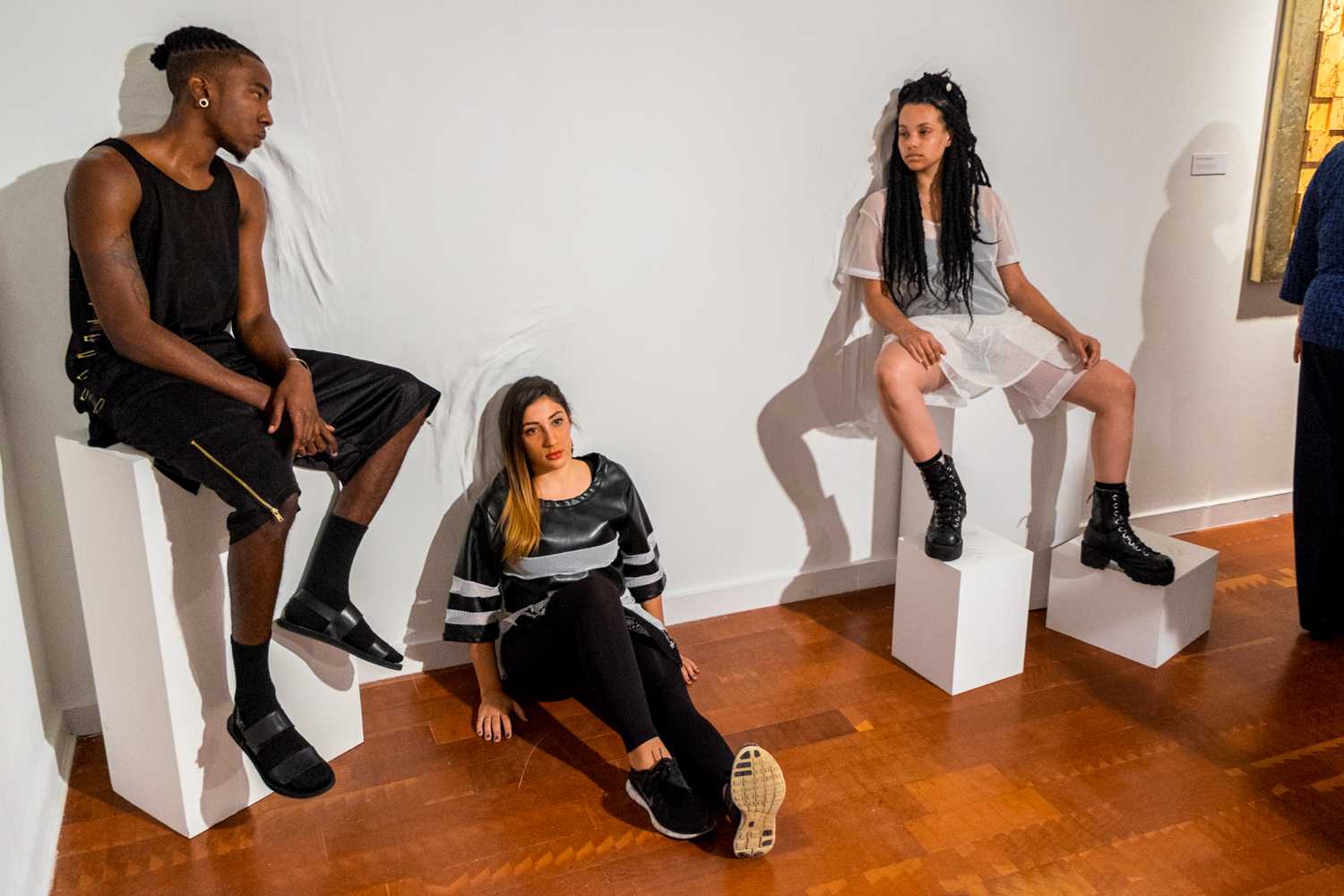
Mohammed F Emran | Web Editor
Miranda’s “Lean,” which was featured at the Boca Museum of Art, and “Off The Act, This Shit Got Me Feeling Lazy” were a huge hit.
The theme of both pieces is touching on the culture of the millennials, portraying three models lazily leaning against a wall. The pedestal is slanted since the content of the piece make up the ingredients of “lean”—a drink made up of promethazine, jolly ranchers and different flavors of Sprite.
Miranda’s piece is simple and not much work appears to have been done besides placing some candy, a styrofoam cup on a slanted column, and somewhere for the models to chill.
But art, which he defines as: “A study of the world around us, going in depth into various aspect of our lives” redeems his otherwise minimalist process and shows his keen insight on how an audience reacts to an exhibit.
Middle-aged patrons, who had no idea what lean was, stared at the models in awe. Taking pictures and smiling in confusion and amazement at this piece of contemporary culture they knew nothing about.
Ironically, Miranda was one of the most sober artist in the Black Rose, “This is water right now” he said while holding a clear plastic cup while his friends around him drank beer and ate pizza.
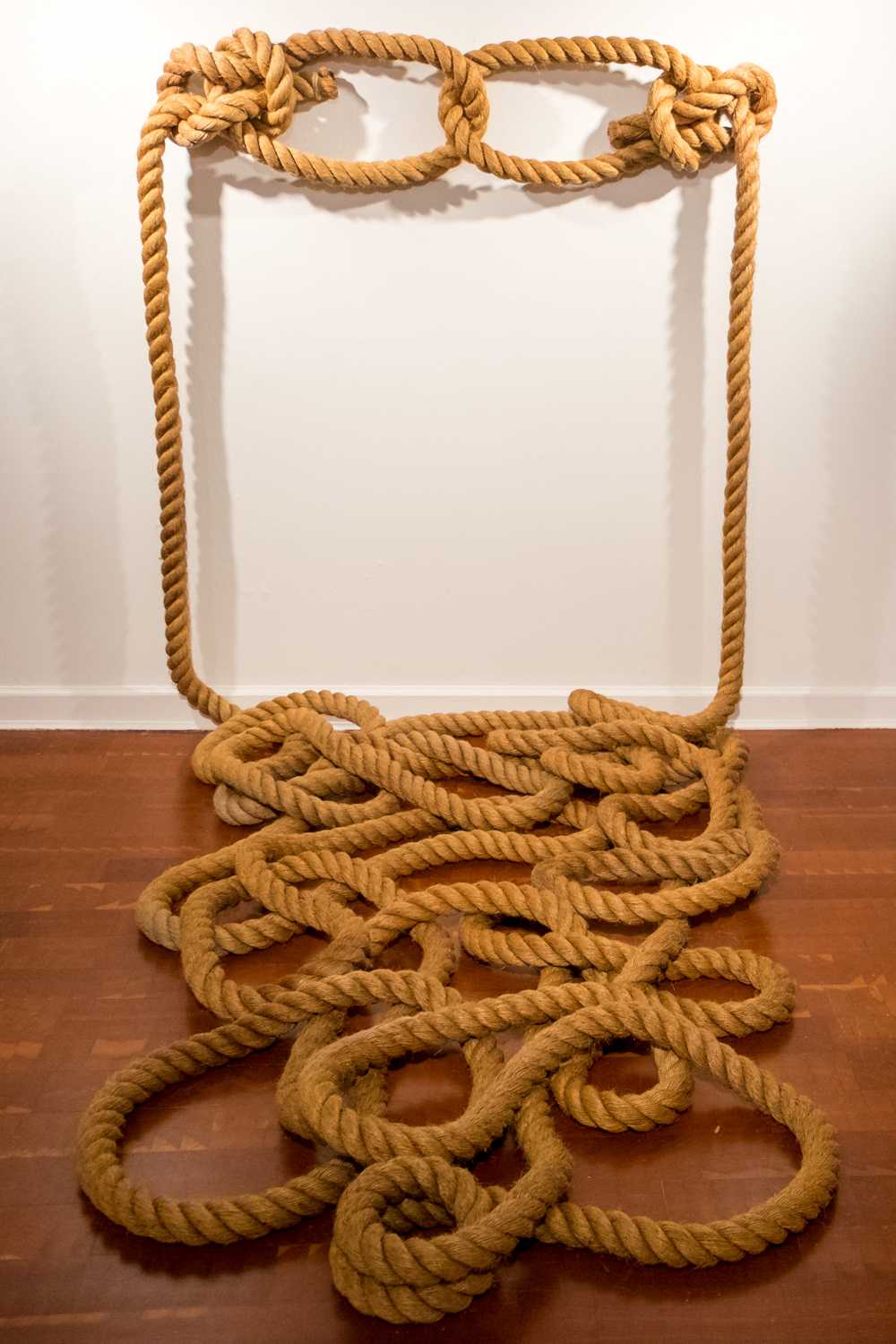
Mohammed F Emran | Web Editor
Over poorly sung karaoke, Mor shouts “What are you doing after you graduate? Are you going to travel?” to Dillon Durando, a studio art major with a concentration in sculpture.
Durando tells Mor that he’s currently working ocean rescue at the beach and hopes to become a coast guard rescue swimmer or a navy diver. His aspirations clearly show in his work.
“Evolution” by Durando represents the beginning of mankind by way of one of the knot. The piece looks funny and a bit intrusive, the two rope ends hung on the wall with intertwined rope on the floor.
If an attendee is not careful they could easily trip. Some did, most nudged at the rope with their feet.
Durando hopes for the viewer to understand that even with modern technology, all things have simple beginnings which we complicate and in the end (of the rope) it returns to simplicity.
“Evolution” is slightly esoteric and interesting but not too engaging, his other piece was much more appealing.
On his definition of art, Durando said, “I think the goal of art is to change their perception in life in how they view things and stir some sort of conflict.”
Durando’s “Taut” definitely changed people’s perceptions. Hung outside the exhibition, “Taut” consists of pieces of anchors tightly hoisted on the floor above the Breezeway.
The metal scraps were taken by Durando himself from coral reefs harmed by anchors that were left in the ocean. “The anchor lost, the reef prevailed,” Durando said of his work.

While Durando spoke about his future, Mor shared her beer with Sharnel Lyttle, who leaned behind her, eating a pizza.
Lyttle described “Relatively as a piece that represented “Basically life and the universe and how everything is made up and we’re all pretty much intertwined and interconnected”
The anthropomorphic representation of the universe for Lyttle wasn’t a male archetype or some persona with Eurocentric features, but two black women with large afros—one with a spiral in between her afro and a hollow, colorful void in the other.
Lyttle portrays the interconnectedness of the universe with black curly hair, a great representation for minorities.
I caught up with Ashley Akerman, a photography major who had four black-and-white photographs on display.
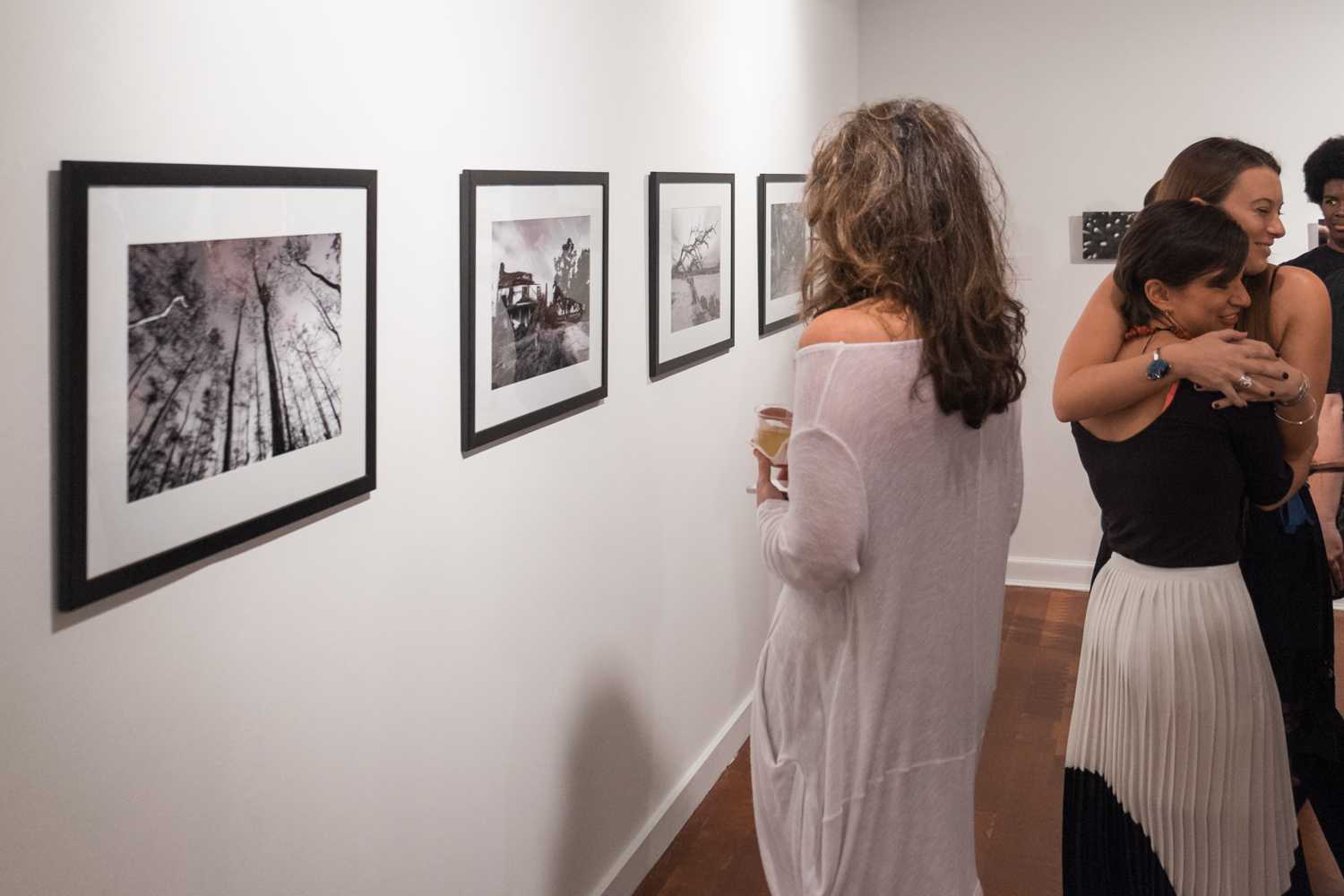
Mohammed F Emran | Web Editor
Holding on to her bud light, Akerman was jovial about the turnout of Exit 26, saying it was the largest she’s ever seen.
On her approach to photography, she said “In the natural world, I guess you absorb the color. But in here, you focus on the images without the distractions of different colors.”
I saw “Swamp Awakening” as a critique on how humans believe themselves to be invincible but in a few years, even a house can be deconstructed by nature.
The picture looked nostalgic but slightly hopeful, as Akerman is a fan of the outdoors. I interpreted as nature winning over man.
Viviana Puga—a studio art major and Akerman’s classmate—agreed, “I really liked Ashley’s [Swamp Awakening] there’s so much misery and suspense. It’s broken down but it looks like someone is still living there.”
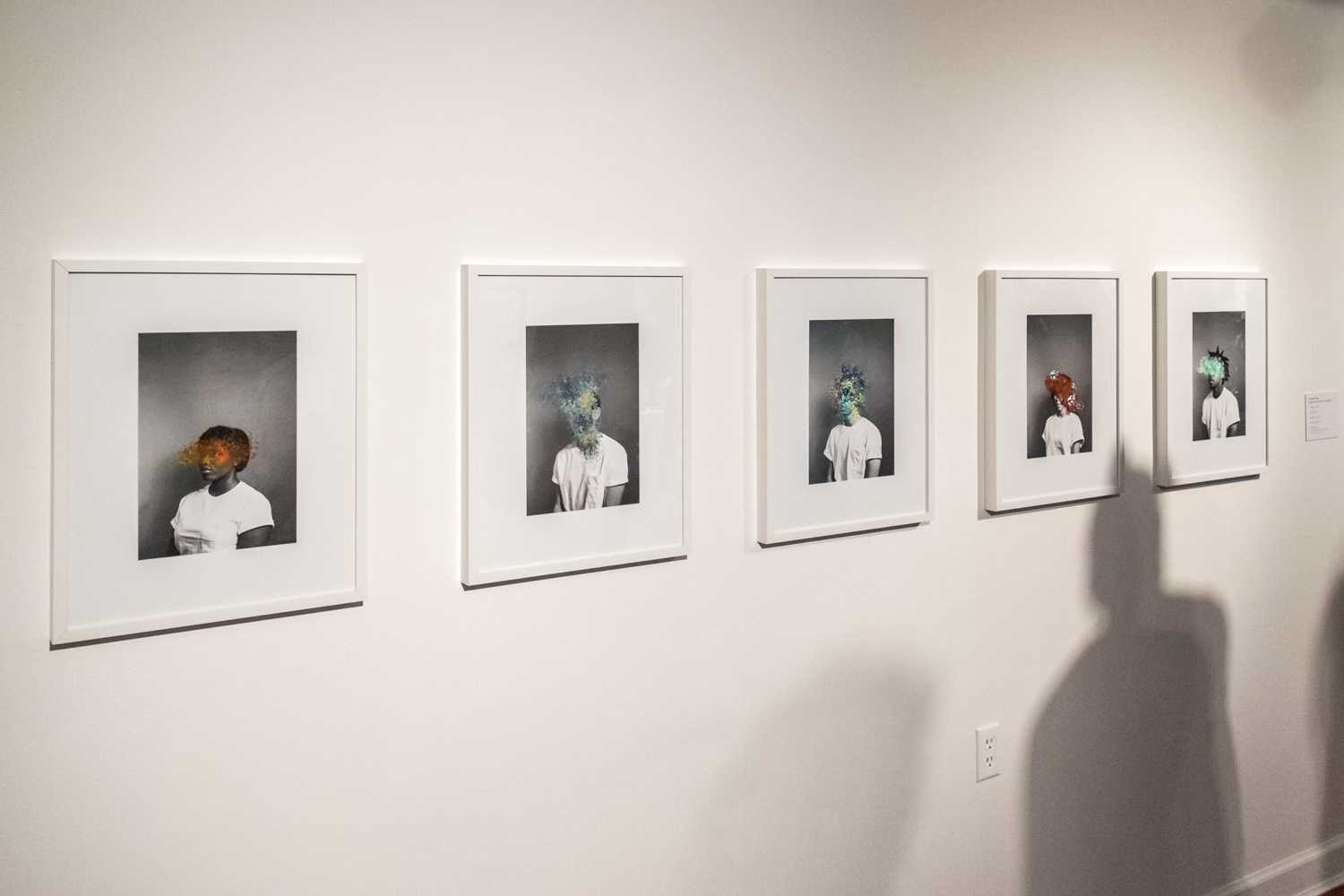
Mohammed F Emran | Web Editor
Puga’s work in the exhibit, a collaboration with Venus Niagolova, is an attempt at portraying the contrast between photography and portrait versus painting and color. Puga is a dancer and her spontaneity reflects in her work.
The images were borne by having different models pose the same way with the same clothing then asked to describe themselves in one word. Using the adjective given, Puga would overlay paint over the faces of the models in a way that would reflect their self-description.
The incongruity of the monochrome portraits with the array of bright colors make for a neat photograph. The emotions of the models akin over their identities adds to the mystery and something for the viewer to interpret themselves.
Akerman, Puga, Mor and most of the artists moved to the front of the bar, dancing near the karaoke stage. Andahl decided to showcase his lyrical skills by freestyling to a beat of Nicki Minaj’s “Anaconda.”
Andahl referenced Amber Reed, who couldn’t make it to the show due to a traffic collision.
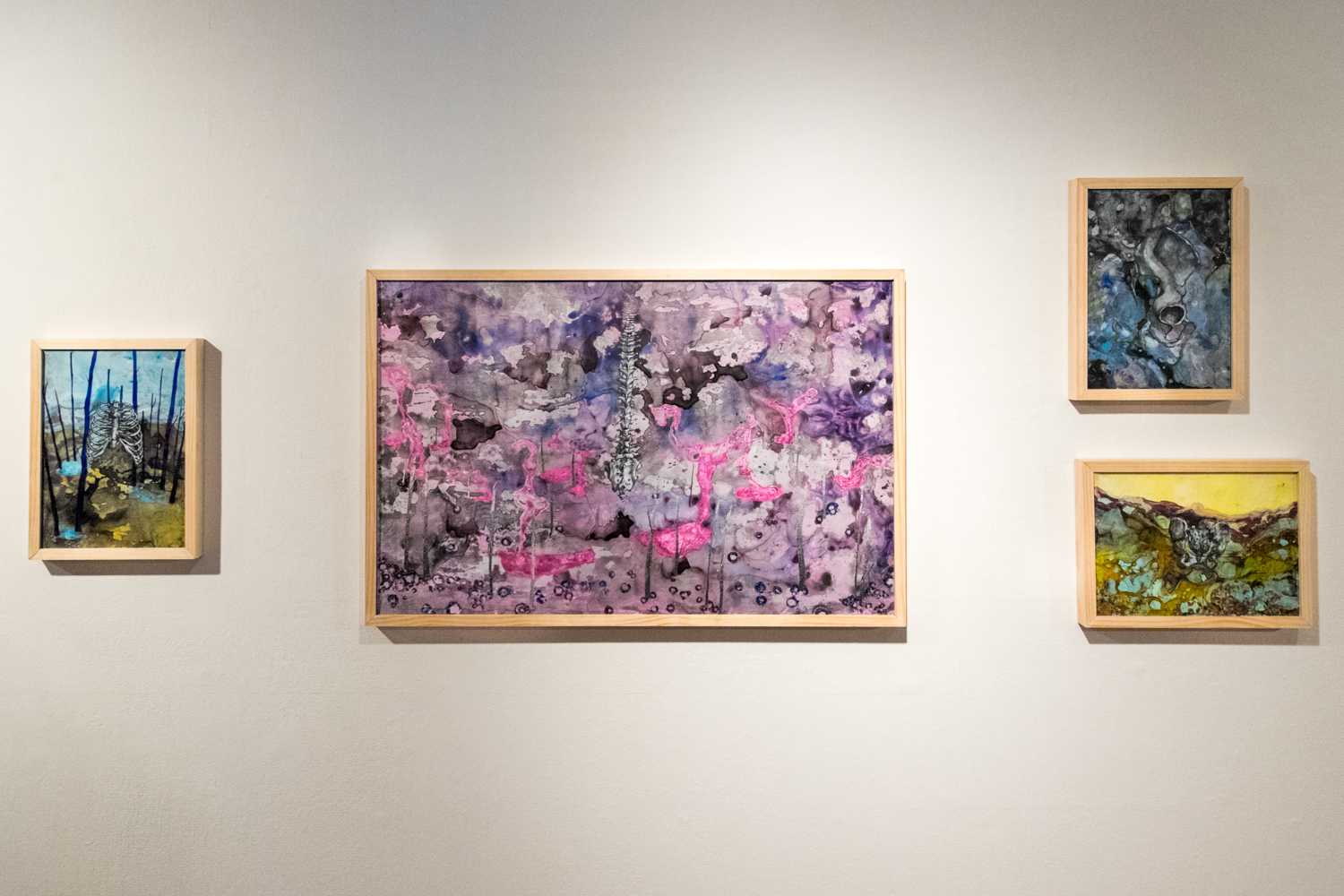
Mohammed F Emran | Web Editor
Amber Reed’s work is slightly macabre but also colorful. Orthopedic and appearing like something out of an Edgar Allan Poe poem, her pieces consist of bones such as pelvises and a thorax “suspended” in the painting, against a somewhat gothic but colorful background.
The paintings are splattered with acrylic paint, making the work appear three dimensional and stepping out of the canvas. Reed’s work appears painful and disturbing but with a cheerful disposition.

Nearing the end of the night, Andahl and his fellow classmates continued drinking, discussing the exhibition and to remember Exit 26, they took plenty of selfies together—making copies of a copy.






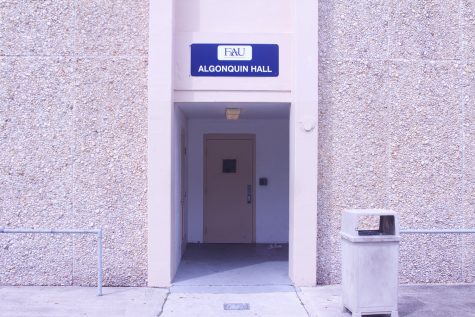






Whatthehell • Nov 18, 2014 at 11:38 pm
I was there that night. This isn’t how i remember it. Who the hell wrote this shit?